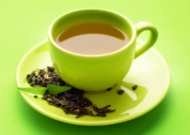Little - Celebrated Olive Leaf Tea Packs the Antioxidant Punch of a Heavyweight.

Although boiling dispels some of the volatile constituents, olive leaf tea provides most of the health benefits of olive leaf extract but in a milder way.
This may be a better starting option for people on medication. (Check with your doctor first).
An ideal replacement for normal black tea it is said to relax, over time ease arthritic pain and in theory should provide the all-round benefits to the cardiovascular system that olive leaf extract does.
Strong infusions have been used by people with AIDS with some astonishing results (ref: Keep Hope Alive - Mark Konlee), and one could opt to go this route in place of other forms of olive leaf extract to combat immune disorders or infections.
Benefits
- Relaxing.
- Heart tonic.
- Antimicrobial/preventative immune support beverage.
- Good for arthritic pain and swelling.
- Pleasant tasting (in normal tea strength).
- Has reportedly produced good results for people with AIDS in strong concentrations.
- Contains no caffeine.
- Energy booster in stronger concentrations.
Drawbacks
- Although fairly well absorbed, concentrations of active ingredients are low and results typically take a few weeks to show.
- A strong tea for medicinal purposes will have a bitter taste. It can be made into iced tea with lemon or added to ginger ale or soda water to mask the taste if desired.
Look for
1. Good quality olive leaves, Mission or Manzanillo cultivar which have not been sprayed with copper sulphate.
A reputable supplier of organic olive leaf tea would be a good bet for this.
2. Packed by a supplier specialising in olive leaf tea. Leaves must be dried below 150 deg F. (65 deg C.) to be fully effective.
3. If you have your own olive trees, you can make your own tea.
Make your own Olive Leaf Tea leaves.
If you have your own olive trees, you can make your own tea.
The key is to ensure you have good quality leaves not sprayed with pesticides.
1. Pick healthy leaves without blemishes mid-morning when any dew has dried.
2. The leaves should ideally be oven-dried at just below 150 deg F. (65 deg C).
Tests indicate that more active ingredients are lost by air or sun-drying than oven drying.
If you air-dry the leaves, preferably do not lay them in direct sunlight which will cause more oxidative damage and reduce their
benefits.
2. When dry, crush the leaves by hand, removing the stalks and place in paper packets for storage before use.
3. Make tea in a teapot as you would normally make it, using approximately a teaspoonful of leaves per cup.
4. For the more sophisticated, (or those who enjoy playing), empty tea bags can be purchased off the internet to spoon your dried leaves into. Use unbleached teabags for healthiest results.
Enjoy!
More about Olive Leaf Extract Tincture.
More about Olive Leaf Water/Glycerine Extracts
More about Olive Leaf Capsules
More about Olive Leaf Powder




Comments
Have your say about what you just read! Leave me a comment in the box below. Note: I can't give medical advice. See dosage page for dosage.